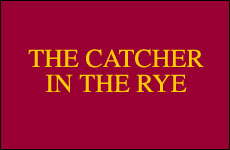 Vampire Weekend's Surprising Jewish Stories
Vampire Weekend's Surprising Jewish Stories


3 min read
J.D. Salinger captured adolescence's anxiety, defiance and desperation for identity and love.
J.D. Salinger, who died last week, is best known for his story of Holden Caulfield, Catcher in the Rye, which has sold 60 million copies and shows no sign of slowing down. The reason the story endures is the uncanny accuracy with which it channels the universal experience of adolescence in all its combination of anxiety, defiance, bitterness, desire, loneliness, and desperation for identity and love. What the story omits to tell is that the same combination and confusion that makes the life of teenagers so difficult, makes adolescence hell for their parents.
Hard as it is to remember when it's your child, their rejection and defiance aren't personal. Imagine reading a letter filled with anger and abuse. Shaken and hurt you take another look at the envelope and discover it's addressed to "Occupant." Adolescents are going through a difficult process of growth and discovery. It often fills them with anger and confusion. Their parents, so frequently the target, just happen to be in the wrong place at the wrong time.
Adolescents desperately want to become independent, but they are terrified of it.
The Torah says, "A man leaves his father and his mother. He clings to his wife and they become one flesh." To successfully marry you have to emotionally separate yourself from your parents. Adolescence is the beginning of this process of individuation and it is marked by great ambivalence. Adolescents desperately want to become independent, but they are terrified of becoming independent. Beneath their bluster and defiance is great anxiety about their ability to find their way in the world, and about their ability to win another person's love. They are confused between their desire to be independent and their desire to be taken care of. They are angry because they're confused.
The very violence of their rejection of their parents is the mark of their ambivalence about leaving. They have no way of knowing that the passage through which they're moving is common to all mankind. They have no way of knowing it will end. They think they'll never see the other side of it; never feel confident; never enter a room without being tortured by self-doubt; never earn another person's love; never feel competent. And if this weren't enough, they are in the grip of chemical imbalance amounting to temporary insanity. They are extraordinary volatile and frequently infuriating. What they need is love.
Writing 60 years ago in Poland, the Piasetske Rebbe wrote in his book, Chovot HaTalmidim, that the challenge is to communicate to your adolescents, "I'm not your antagonist in this passage you're going through. I'm your ally. You may be apprehensive about your ability to make your way in the world, but I know you'll find a way. I believe in you more than you believe in yourself."
Salinger's famous novel ends with Holden Caulfield's vision of adolescence as children playing in a field before a dangerous cliff. They need, he says, "a catcher in the rye" -- someone to catch them just in time, and make sure they don't fall off the cliff. So much anger. So much struggle. So much desire to be held and hugged, and so afraid of acknowledging it. Recognizing the ambivalence beneath the bluster is what makes for successful parenting of adolescents.
I heard once from Rabbi Shimon Russell, the founder of a school for rebellious teenagers, that his struggles with his own daughter lead him to open the school. "I hate you," she screamed at him. "Yes, I know," he said, "but I love you more, and my love is stronger than your hate."
